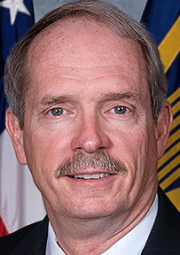DISA CIO targets cloud automation
Bennett says automation is critical for network configuration, big data and responding to cyber threats faster than "a pregnant turtle."
As the Defense Department gets serious about cloud computing, the key to making it work is automating as much of the DOD cloud infrastructure as possible while improving the capability to detect and blunt cyber attacks, the Defense Information Systems Agency CIO said this week.

"We've got to leverage automation and it has to be built in at the get-go," DISA CIO David Bennett told an industry conference on secure cloud computing and the promise of big data for government agencies. While stressing the need to "trust but verify," Bennett added that automation would be critical for tasks like network configuration and big data tools like visualization.
Bennett, who also serves as director of DISA's Implementation and Sustainment Center, called big data a "cool scenario" that nevertheless requires supporting analytics.
Another use of automation is threat detection. Bennett stressed that protecting against insider threats is "at the forefront of everything we do." But regardless of where cyber threats come from, automation tools would enable DISA analysts to react to them in real time.
The need for speed is growing. "A cyber attack happens at the speed of electrons; our ability to react is at the speed of a pregnant turtle," Bennett told a ballroom full of potential cloud and analytics vendors.
Moving an organization as complex as DISA to the cloud presents a daunting list of challenges, observers note. An industry consultant noted that the agency operates one of the most sophisticated networks in the world. "They have network endpoints that are satellites," stressed industry consultant Greg Jones, a director at Deloitte Consulting.
Other DOD agencies also are considering how they can leverage cloud-based data analytics platforms. For example, Bob Jimenez, chief technology officer of the National Reconnaissance Office, said the agency has surveyed more than 500 of its analysts to determine their requirements for a data analytics platform. He broke down tasks into two major categories: exploratory and production analytics.
As NRO shifts its emphasis to leverage big data, Jimenez said, he is trying to get a handle on the "consumption needs" of agency analysts along with developing a trusted cloud architecture that can manage huge amounts of satellite imagery and sensor data.



